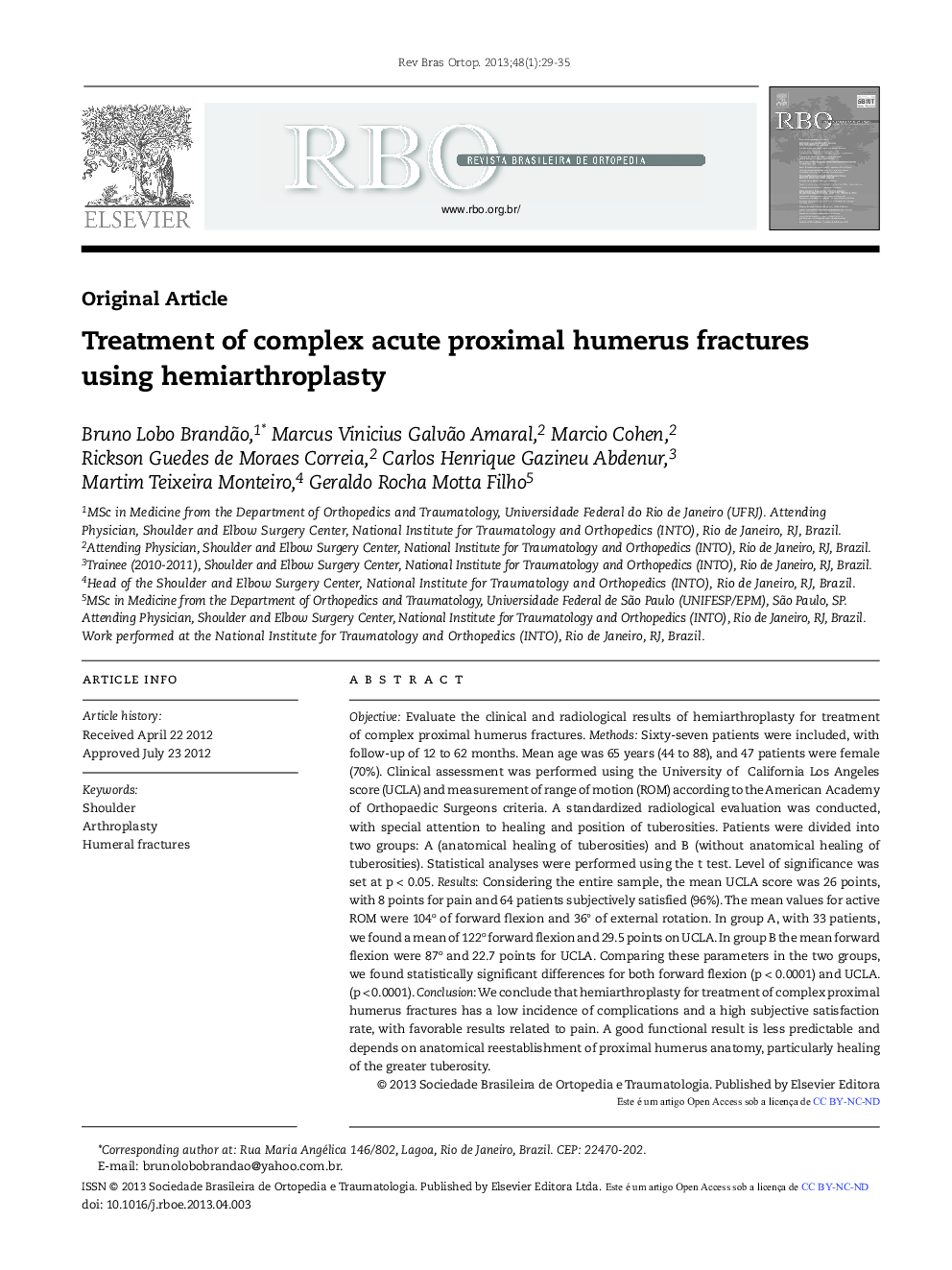| Article ID | Journal | Published Year | Pages | File Type |
|---|---|---|---|---|
| 2718329 | Revista Brasileira de Ortopedia (English Edition) | 2013 | 7 Pages |
ObjectiveEvaluate the clinical and radiological results of hemiarthroplasty for treatment of complex proximal humerus fracturesMethodsSixty-seven patients were included, with follow-up of 12 to 62 months. Mean age was 65 years (44 to 88), and 47 patients were female (70%). Clinical assessment was performed using the University of California Los Angeles score (UCLA) and measurement of range of motion (ROM) according to the American Academy of Orthopaedic Surgeons criteria. A standardized radiological evaluation was conducted, with special attention to healing and position of tuberosities. Patients were divided into two groups: A (anatomical healing of tuberosities) and B (without anatomical healing of tuberosities). Statistical analyses were performed using the t test. Level of significance was set at p < 0.05ResultsConsidering the entire sample, the mean UCLA score was 26 points, with 8 points for pain and 64 patients subjectively satisfied (96%). The mean values for active ROM were 104° of forward flexion and 36° of external rotation. In group A, with 33 patients, we found a mean of 122° forward flexion and 29.5 points on UCLA. In group B the mean forward flexion were 87° and 22.7 points for UCLA. Comparing these parameters in the two groups, we found statistically significant differences for both forward flexion (p < 0.0001) and UCLA. (p < 0.0001).ConclusionWe conclude that hemiarthroplasty for treatment of complex proximal humerus fractures has a low incidence of complications and a high subjective satisfaction rate, with favorable results related to pain. A good functional result is less predictable and depends on anatomical reestablishment of proximal humerus anatomy, particularly healing of the greater tuberosity.
